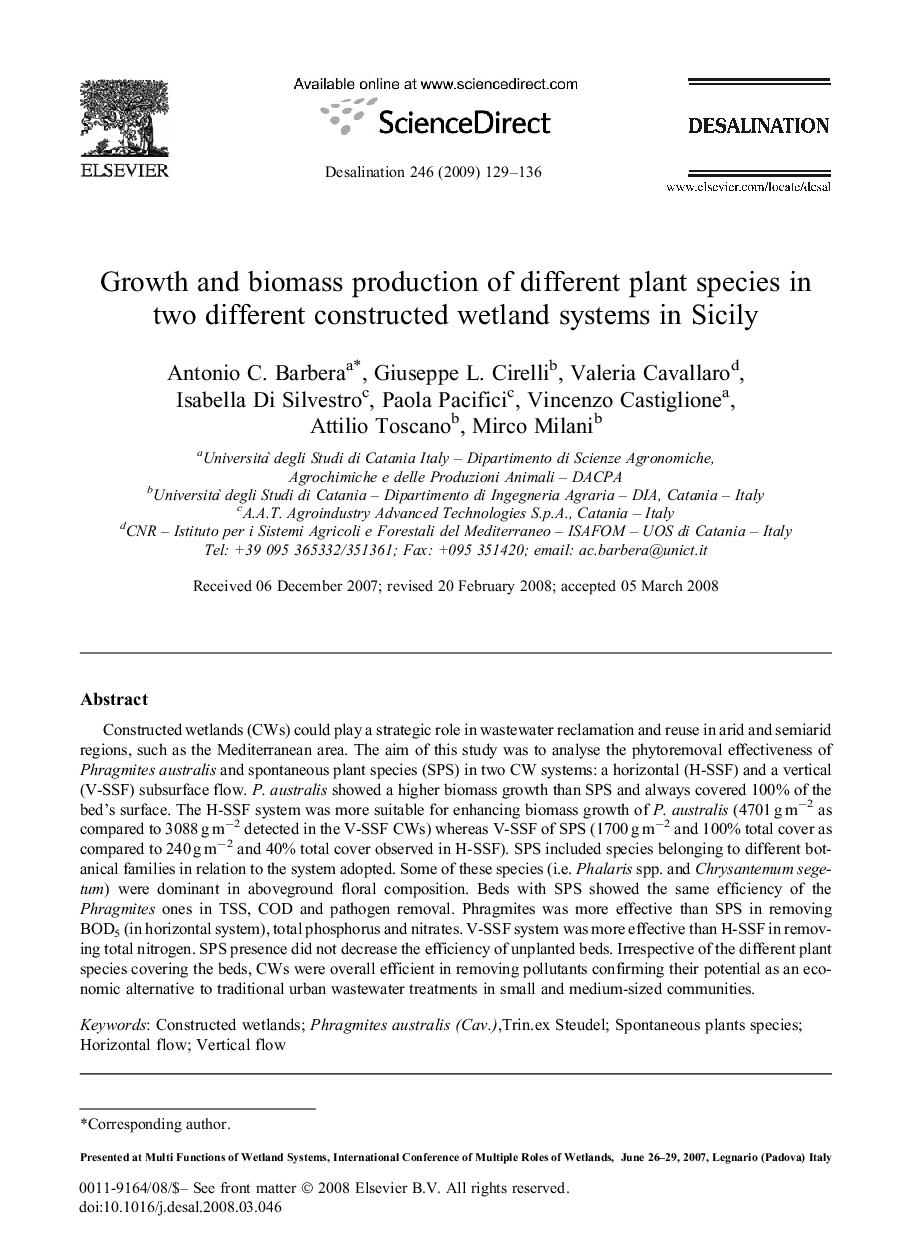| Article ID | Journal | Published Year | Pages | File Type |
|---|---|---|---|---|
| 626645 | Desalination | 2009 | 8 Pages |
Constructed wetlands (CWs) could play a strategic role in wastewater reclamation and reuse in arid and semiarid regions, such as the Mediterranean area. The aim of this study was to analyse the phytoremoval effectiveness of Phragmites australis and spontaneous plant species (SPS) in two CW systems: a horizontal (H-SSF) and a vertical (V-SSF) subsurface flow. P. australis showed a higher biomass growth than SPS and always covered 100% of the bed's surface. The H-SSF system was more suitable for enhancing biomass growth of P. australis (4701 g m −2 as compared to 3088 g m −2 detected in the V-SSF CWs) whereas V-SSF of SPS (1700 g m −2 and 100% total cover as compared to 240 g m −2 and 40% total cover observed in H-SSF). SPS included species belonging to different botanical families in relation to the system adopted. Some of these species (i.e. Phalaris spp. and Chrysantemum segetum) were dominant in aboveground floral composition. Beds with SPS showed the same efficiency of the Phragmites ones in TSS, COD and pathogen removal. Phragmites was more effective than SPS in removing BOD5 (in horizontal system), total phosphorus and nitrates. V-SSF systemwas more effective than H-SSF in removing total nitrogen. SPS presence did not decrease the efficiency of unplanted beds. Irrespective of the different plant species covering the beds, CWs were overall efficient in removing pollutants confirming their potential as an economic alternative to traditional urban wastewater treatments in small and medium-sized communities.
